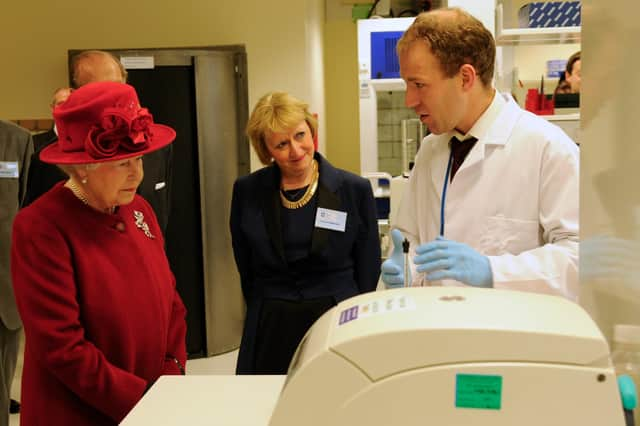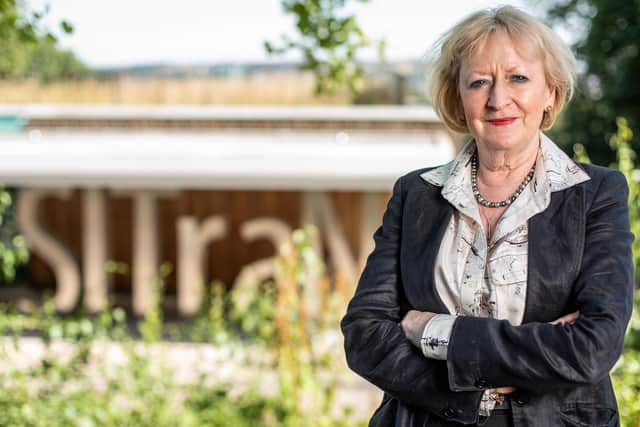Ground-breaking Sheffield research centre celebrates 10 years of progress


My answer was simple – I would build a state-of-the-art research institute to bring world-leading scientists and clinicians under one roof to increase our understanding of MND and related neurodegenerative diseases and develop new treatment approaches for these conditions.
Many doctors regard MND as the worst disease in medicine.
MND is an incurable condition affecting the nerves - or motor neurons - in the brain and spinal cord that enable the nervous system to control our muscles and the movements of our body.


Advertisement
Hide AdAdvertisement
Hide AdIn MND, as nerves become injured, the communication or ‘electricity supply’ to the muscles deteriorates, leading them to weaken, stiffen and eventually waste. It has a devastating impact, affecting a patient’s ability to use their arms and hands, walk, talk, eat and breathe.
Ten years ago this week, my vision for a translational research centre became a reality here in Sheffield.
SITraN, The University of Sheffield’s Institute for Translational Neuroscience, which brings together scientists and clinicians to identify new ways to prevent and slow down debilitating diseases like MND, Parkinson’s, Alzheimer’s and multiple sclerosis, was officially unveiled by the Queen.
We may be hidden in terms of our location within the city, but SITraN has put Sheffield on the map for its revolutionary research.
Our research centre is unlike any other in the world.
Advertisement
Hide AdAdvertisement
Hide AdSITraN brings together state-of-the-art laboratories and equipment, a clinical database of more than 2,000 patients and a large resource of human biosamples and brain-bank material donated by patients.
As part of a civic university deeply rooted in our city and region, we want the people of Sheffield to play a part in and benefit from our life-changing discoveries.
Our world-class team is driving experimental science into international clinical trials – meaning people in Sheffield and South Yorkshire have access to novel treatments before patients in other parts of the country.
SITraN researchers are using disease models to identify groundbreaking new therapies and these are producing some of the most exciting results in medicine.
Genetic therapies are pioneering treatments that involve the insertion of a molecule into target cells to silence, replace or manipulate a faulty gene.
Advertisement
Hide AdAdvertisement
Hide AdSITraN researchers and clinicians played a key role in the first large-scale international study, which found stem cell treatment stabilises and improves disability in patients with active MS.
Our researchers are also conducting state-of-the art drug screens to help repurpose existing treatments to slow down, or even reverse the progression of neurodegenerative diseases.
Our scientists have identified properties in a drug candidate which has shown the potential to slow MND progression.
In partnership with Sheffield Teaching Hospitals NHS Trust and the National Institute for Health Research Sheffield Biomedical Research Centre, our researchers are also assessing the use of a drug already used to treat liver disease, to slow down the progression of Parkinson’s by improving the function of mitochondria, the energy generators or batteries of the cells.
Advertisement
Hide AdAdvertisement
Hide AdMajor discoveries have also been made in new technology which can improve quality of life for patients.
These include non-invasive ventilation for MND patients and a revolutionary neck collar, called HeadUp, designed to ease pain and make everyday tasks much easier for patients living with this debilitating disease.
And the future?
Neuroscience at the university is on a great trajectory, some of our work is coming to fruition and making a difference to patients across the globe.
We know important and impactful scientific advances come from interdisciplinary research.
Within neuroscience at the university, we now have a flagship cross-faculty research institute, which brings together more than 120 leading neuroscientists from medicine, science and engineering, to work together to understand neurological conditions and translate that understanding into improved treatments.
Advertisement
Hide AdAdvertisement
Hide AdThe institute already has a global network of partners and collaborators.
We are so proud of the dedicated staff and students who have worked so tirelessly to achieve so much in the last 10 years.
I would also like to thank the people of Sheffield for their incredible support.
People across the city were among the 11,000 donors who helped raise more than £2 million for the new Sheffield Scanner - a PET-MRI facility which is one of only eight in the UK and the first in Yorkshire.
It is already helping to fast-track drug discovery, speed up diagnosis and track disease progression more accurately.
It will also bring additional clinical trials to South Yorkshire, giving patients across the region early access to potentially life-changing novel therapies.
SITraN’s successes would not have been possible without so many people; STH and the SBRC, which advances our scientific research into clinical trials, our patrons and, above all, the patients and their families.
Without them, we would not be able to continue working together to combat devastating neurodegenerative diseases.